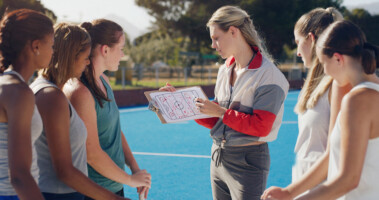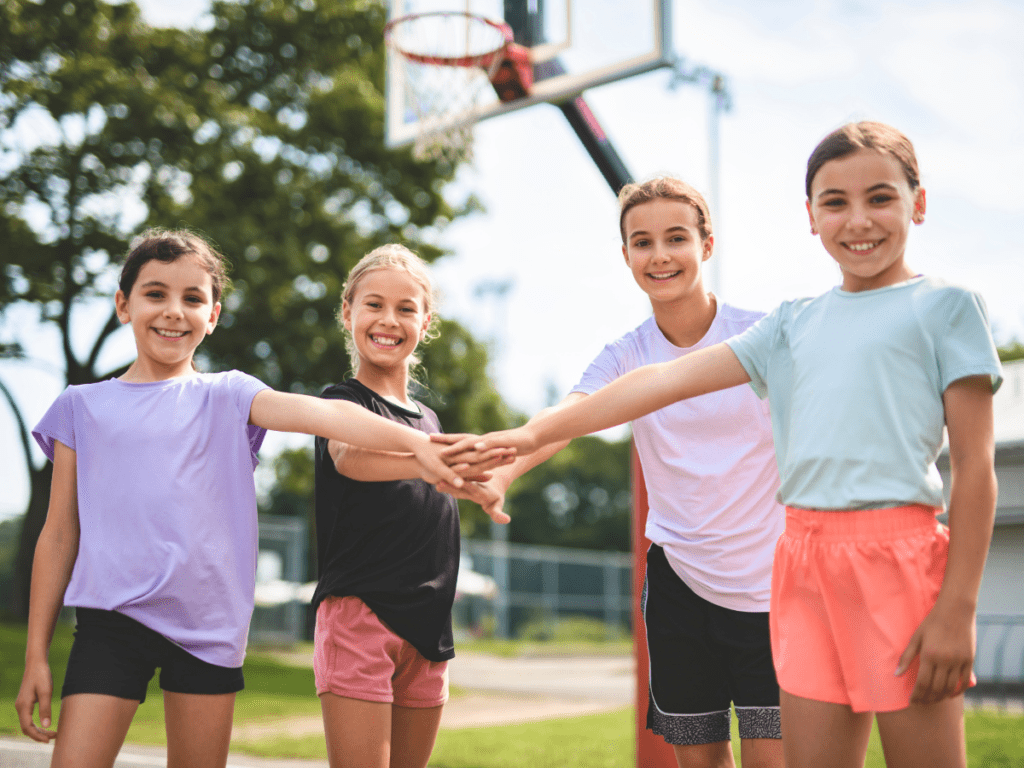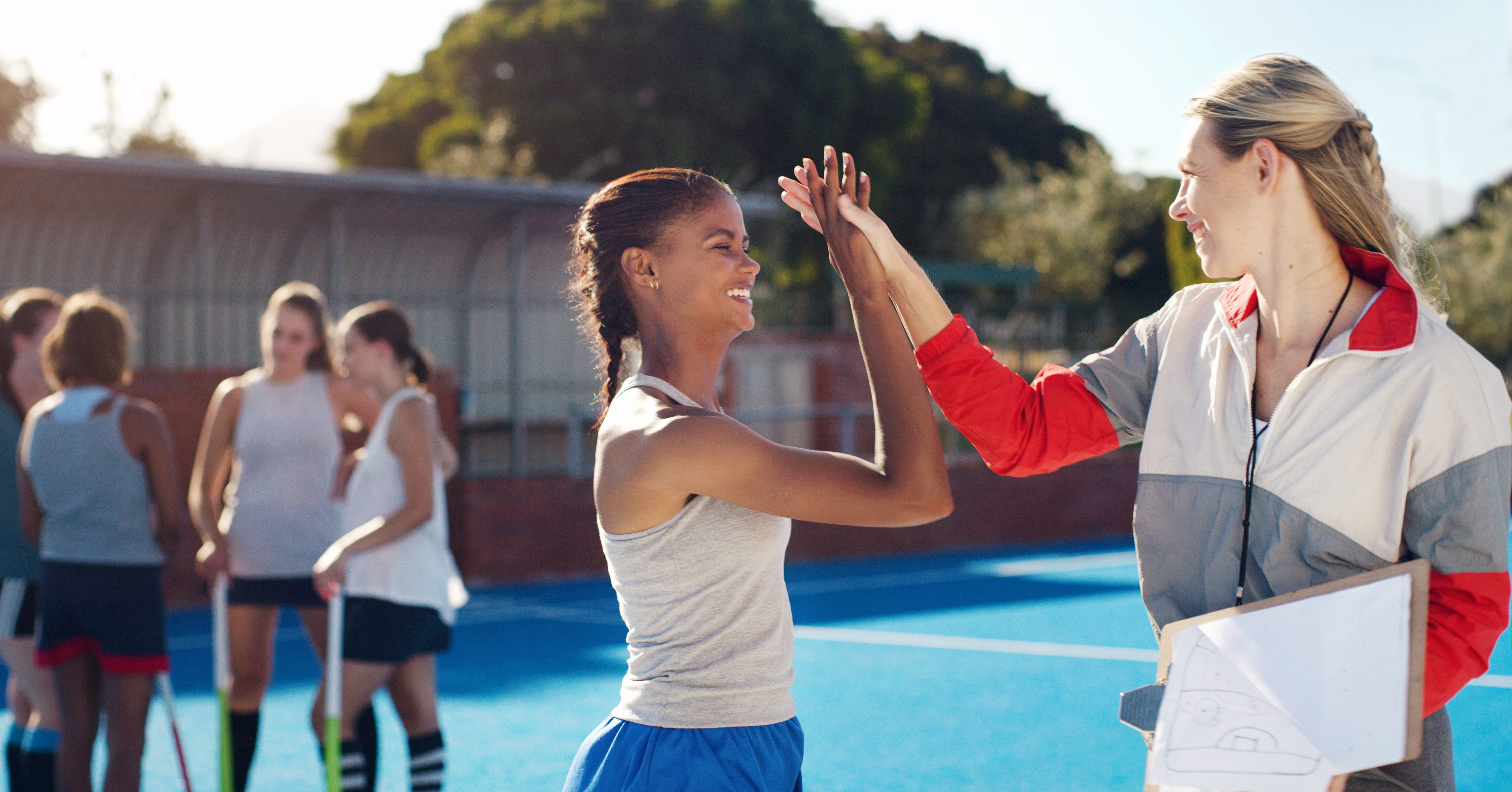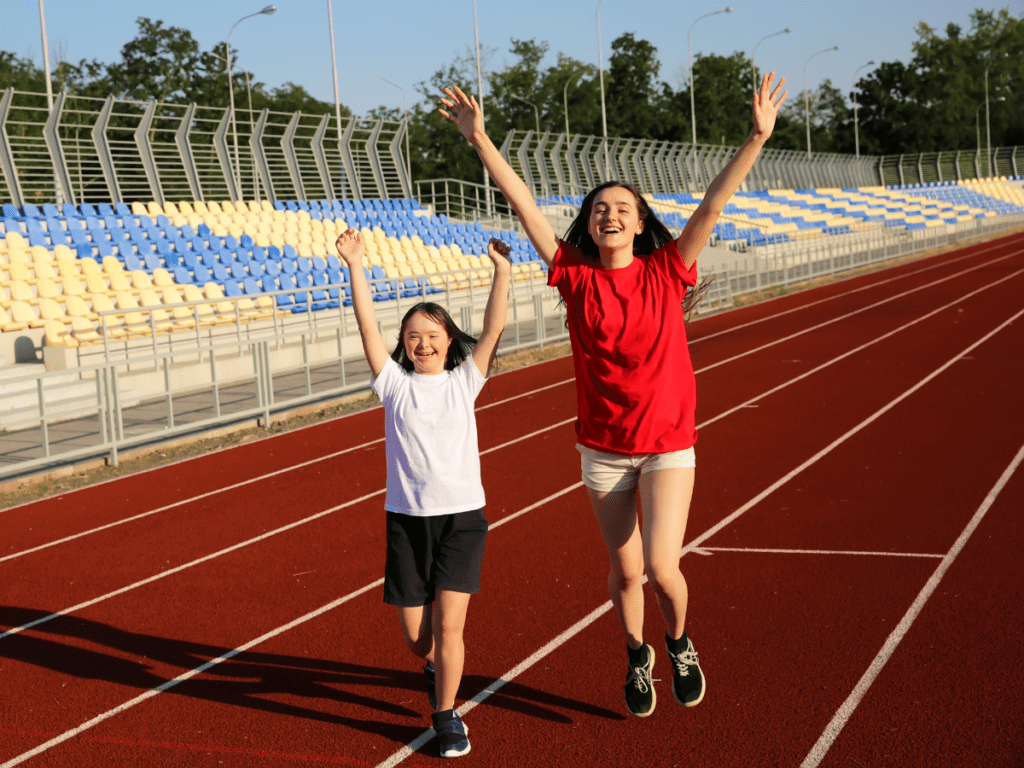
Sport has the potential to foster girls’ healthy development, leading to outcomes such as enhanced self-esteem, physical health, and mental well-being. Sport can reduce adverse health outcomes for girls, such as depression (Canadian Women & Sport, 2022; Eime et al., 2013). Yet in Canada, girls are dropping out of sport at alarming rates, with recent findings highlighting how half of girls dropout of sport by adolescence (Canadian Women & Sport; 2022).
Girls who do not participate in sport are more likely to be inactive and develop unhealthy lifestyles, such as increased sedentary behaviour and screen time (Merkel, 2013). The search for initiatives to reduce barriers to participation and improve retention in quality sport for girls is therefore becoming increasingly popular.
Any reference to girls or women in this blog refers to those who identify with the girl/women gender binary and the authors fully support equity and inclusion along the broad spectrum of gender identity. Academic references used in this piece are the most recent, which highlights the need for more research in this specific area. This article will look at several key recommendations and tips to help keep girls in sport.
Role models versus mentors: What’s the difference?

Role models are individuals who set an example for others and can be someone an individual does not know personally nor has ever come in contact with like celebrities or professional athletes (Kearney & Levine, 2020). As such, anyone can serve as a role model so long as a person chooses them as one.
Mentors are often non-familial individuals with experience and knowledge who serve as role models, provide guidance, and assist in their mentee’s development (Rhodes & Roffman, 2003). To be a mentor, one must establish a close, personal relationship with their mentee and explicitly act as a trusted advisor to the individual they oversee for a sustained period of time (Kearney & Levine, 2020).
Existing sport research has predominately focused on role models for girls in sport (Ronkainen et al., 2019). However, findings of a review of sport role models and their impact on physical activity participation showed that the most effective programs involved the development of long-term, mentor-like relationships (for example, relationships that were sustained once a program finished; Payne et al., 2003).
Based on those comparisons, there is value in shifting the focus from role models to mentors to better understand how sport-based mentorship influences outcomes for girls in this context.
Sport-based mentorship in action
The application of mentorship for girls in the sport environment offers opportunities for girls to form positive, supportive relationships with trusted adult figures (Holt et al., 2017). Additionally, sport programs that allow girls to form quality relationships with adults or mentors are said to be more effective for enhancing development than programs without this element (Bean et al., 2015) .

Mentors can also convey important life skills and values like leadership and confidence to girls through storytelling. It can lead to knowledge transfer, the fostering of self-concept, promotion of positive behavioural outcomes, and sharing of similar feelings and values (Hallmann et al., 2021). These aspects are important to girls as they can translate directly to both sport and non-sport areas of their lives (Overbye & Wagner, 2014).
Tips for developing sport-based mentorship initiatives for girls
While research that explicitly explores mentorship for girls in sport is limited, it still can be said that sport represents a context where many elements of mentorship can be readily transferred.
Looking at findings from limited work by Bean & Forneris, 2017 and Bruening et al., 2009, along with recommendations from the broader youth mentorship literature, the following can be adapted for girls-focused sport settings are:
- Match mentors and mentees based on similar interests, not just looks or availability. The quality of the mentoring relationship is considered more critical for program success than the mere availability or quantity of mentors (Machida-Kosuga, 2021). For instance, if two individuals both play the same sport or position, they will be able to bond over their mutual interests easier. Matching should focus on quality, not quantity.
- Prioritize the dose and duration of the mentoring relationship. Aim for a minimum of three months (12 months is ideal). Relationships take time to develop; within these months, include ample opportunities for matches to connect consistently (for example, once per week) to prioritize relationship-building. Additionally, strive to use a combination of sport activities (like skills and drills) and non-sport activities (for example, discussions) for matches to deepen their bonds through skill-building.
- Facilitate a safe space in the mentoring program and relationship. Girls are more prone to co-rumination in their relationships, meaning they strongly value the intimate, emotional benefits of mentorship (Spendelow et al., 2017). Encourage mentors to be open and vulnerable with their mentees while not shying away from difficult sport-related topics. For example, mentors can share struggles they’ve experienced as women athletes with tips on how girls can navigate similar obstacles in their athletic journeys.
- Engage in frequent monitoring and evaluation of the program and mentoring relationships to be able to adapt quickly and adjust, if necessary. Girls are more negatively impacted by poor mentoring relationships and programs than their boy counterparts (Bogat et al., 2013). This means program staff should continuously check-in with both mentors and mentees throughout a program cycle. Check-ins can include monthly logs, mini feedback forms, or email correspondence with caregivers or the mentee.
Concluding Remarks

Mentorship holds potential for being a powerful avenue to address existing gaps related to girls’ advancement and retention in quality sport. Sport-based women mentors can offer a unique understanding of the physical, psychological, and emotional changes girls experience in sport and are well-positioned to help them overcome some of these barriers that prompt girls to drop out of sport (O’Reilly et al., 2018). This would suggest that sport organizations should consider exploring ways to implement mentorship-based programming and initiatives for girls in their communities. Of the programs that currently exist, ongoing monitoring and assessment should be conducted to build an understanding of how mentorship influences girls’ experiences and outcomes within sport settings.
This blog post and associated research by Hummell are possible due to support from a joint Social Sciences and Humanities Research Council Canada Graduate Scholarship – Doctoral and Sport Participation Research Initiative grant.